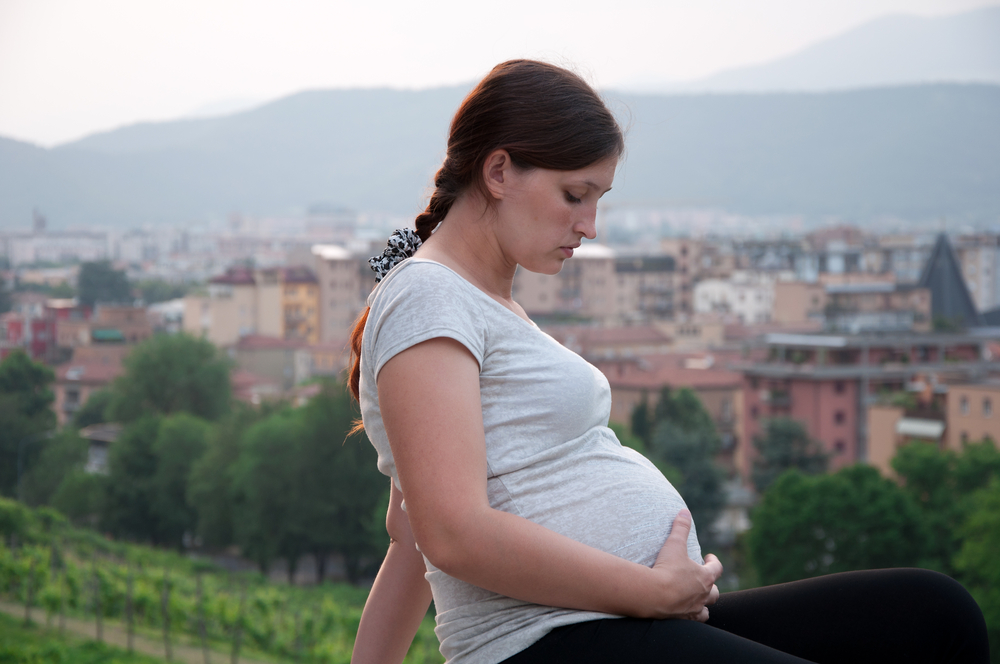Air Pollution Linked with Stillbirth Risk

Air pollution has been linked to a number of breathing problems, mainly in developing countries, and now a new preliminary study looking at pollution levels in New Jersey has found an increased risk of stillbirths among women exposed to specific pollutants.
"We found that different pollutants are harmful in different trimesters of pregnancy," said Dr. Ambarina Faiz, an instructor at Robert Wood Johnson Medical School. For example, exposure to a high level of nitrogen dioxide was particularly harmful during the first trimester, she said.
The study was published online July 18 in the American Journal of Epidemiology.
In their study, researchers used statewide birth data from 1998 through 2004. They compared live births with stillbirths, looking at mothers who lived within 10 kilometers (a little over 6 miles) of New Jersey's 25 pollutant-monitoring stations.
They also gathered data from those stations: 11 stations monitored nitrogen dioxide, 16 monitored sulfur dioxide and 16 monitored carbon monoxide.
Researchers compared the pollutant concentrations during a woman's three trimesters of pregnancy, and took into account factors known to affect stillbirth risk, including the mother's age, smoking, ethnicity and prenatal care.
What they found
Get the world’s most fascinating discoveries delivered straight to your inbox.
Several trends emerged from the data. In general, stillbirths were rare, with fewer than 1,000 among the hundreds of thousands of births in any region where the researchers measured pollutants. For example, among the more than 207,000 women whose carbon monoxide exposure was estimated as being elevated during their first trimester, there were about 800 stillbirths. (Researchers defined a stillbirth as the death of a fetus after the 20th week of pregnancy.)
The stillbirth risk was elevated for mothers exposed to pollutants during certain times of pregnancy.
Results showed that throughout pregnancy, for every 10 parts per billion increase in nitrogen dioxide levels, risk of stillbirth increased 27 percent. For every increase of 10-ppb in the pollutant during the first trimester, the stillbirth risk increased by 16 percent.
For sulfur dioxide, the stillbirth risk increased 13 percent with every 3-ppb increase in the first trimester, and 26 percent for every 3-ppb increase in the third trimester.
Carbon monoxide was associated with a 14 percent increase in stillbirth risk in the second and third trimesters for every 400-ppb increase in concentration.
It remains unclear whether reducing pollution alone could prevent stillbirths, or how many could be avoided, Faiz said. "But it is a risk factor, and it should be looked at with more accurate [measurement] of exposure," she said.
Air pollution during pregnancy
The study was not as strong as it would have been had researchers been able to measure each woman's level of pollution exposure. But in following up on the few studies that have looked at air pollution and maternal health, it does contribute to a trend, experts said.
"Most air pollution studies are done to evaluate the health effects related to the respiratory system, [such as] asthma or COPD," said Dr. Youcheng Liu, an associate professor of environmental and occupational health at the University of North Texas Health Science Center. "Relatively few studies…are related to reproductive health."
One problem is that it's still unclear how pollution might have such an effect. While pollutants present an obvious risk to the lungs, "Why to the fetus, across the placenta? In terms of mechanism, it still needs an explanation," Liu said.
Because of the way data were collected, the study gives information about the region where women live, but not necessarily their exact exposure, giving an extra variable that can skew results.
"People, during pregnancy, move around," Liu said. Among those who may not have traveled great distances, "even at home, the [exposure levels] can be affected by whether you open the window or not, whether you do cooking or not."
The most obvious hazard for mothers wanting to avoid air pollution exposure is smoking, the dangers of which far exceed those of the air pollutants looked at in the study, he said.
Liu added that concerned expectant mothers might monitor levels of smog, and run errands or travel outside during periods where smog or other pollution levels are expected to be lower.
But it remains clear that further work needs to be done to understand just how much extra caution about air pollution could be needed.
"It increases the risk, but how much and to what extent, I'm not sure about that," Faiz said.
Pass it on: Pregnant women exposed to certain air pollutants may be at higher risk for stillbirths.
his story was provided by MyHealthNewsDaily, a sister site to LiveScience. Follow MyHealthNewsDaily on Twitter @MyHealth_MHND. Find us on Facebook and Google+.



